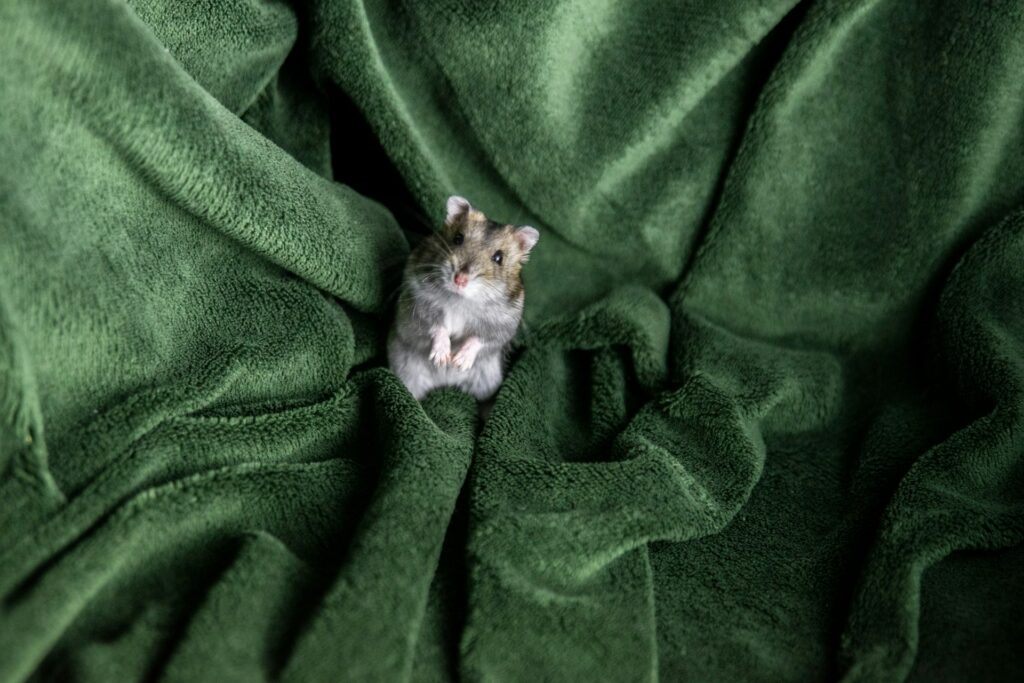Securing your camper from a rodent problem is essential for any RV owner. This guide provides strategies to prevent mice from making your recreational vehicle their home while it is in storage. From sealing nooks and crannies to using mouse deterrents, learn how to keep the mice at bay and maintain your RV lifestyle without unwelcome pests.
The Essentials of Camper Mouse Prevention
Addressing a rodent problem is the cornerstone of camper maintenance, crucial for preserving both the condition and comfort of your recreational vehicle.
Start With a Thorough Inspection
Before taking steps to prevent a mouse infestation, inspect your camper meticulously for potential entry points. Mice can squeeze through tiny gaps, so check the integrity of window seals, door frames, and exterior access panels. Pay close attention to plumbing lines, as these often provide direct access for rodents. Seal any openings with expanding foam or caulking to block these potential entry points and create a barrier against mice.
Effective Sealing Techniques
To keep mice out of your camper, focus on sealing potential entry points. These can be as small as a dime, so thoroughness is key. Inspect the exterior of the camper, paying special attention to areas where utilities enter, as these are common access points for mice. For any openings found, use materials such as steel wool and spray foam, which are difficult for mice to chew through. Regularly check these seals, as a mouse infestation can occur quickly if they find even the smallest holes unguarded.
Creating a Mouse-Proof Environment
Preventing mice from entering your camper involves creating an environment that’s unattractive to them. Remove tree branches that provide easy access, store fabric softener sheets in nooks and crannies, and ensure all food is sealed and stored properly. Be diligent about keeping the interior clean, as even small crumbs can attract rodents. Regular monitoring of your camper while it’s in storage is also vital for maintaining a mouse-proof environment.

Natural and Chemical-Free Preventative Measures to Keep Mice Away
Opt for natural mouse prevention with dryer sheets, peppermint oil-soaked cotton balls, and fresh cab pouches, all of which mice dislike and deter mice effectively.
Harnessing the Power of Natural Mouse Deterrents
For those seeking a natural solution to mouse prevention, consider placing dryer sheets and peppermint oil-soaked cotton balls throughout your camper. Mice dislike the strong scents and are likely to steer clear. Fresh Cab pouches, made from balsa fir and plant fibers, are another effective option, as are sprays like Grandpa Gus’s deterrent, which combines peppermint and cinnamon essential oils. These natural deterrents are easy to use and safe for both you and the environment.
The Benefits of Using Dryer Sheets
While not a guaranteed solution, many swear by the power of dryer sheets to keep mice away. The strong fragrance is said to be unpleasant to mice, thus acting as a deterrent. Placing them strategically around your camper, especially near potential entry points, can help. However, they should be used in conjunction with other methods for best results.
Irish Spring Soap as a Mouse Repellent
Another home remedy popular among RV owners is the Irish Spring soap. Its strong scent is purported to repel mice, making it a cost-effective option to try. Simply cut the soap into pieces and distribute them in areas where mice are likely to enter or nest.
Technological Solutions for Keeping Mice Away
Technological advancements offer preventative measures to keep mice and other pests from creating havoc in your camper. Explore mouse repellents and devices designed to deter mice from your stored RV.
Investing in Electronic Repellents
Electronic repellents offer a high-tech approach to mouse prevention. Devices like ultrasonic pest repellers emit a sound that deters mice, providing a layer of protection against mice invasions. These can be particularly useful at a campsite or storage location where traditional methods may not be feasible.
While these devices can be an effective part of your mouse-repellent strategy, they work best in conjunction with other preventative measures to ensure comprehensive protection against mice.
Innovative Lighting Techniques
Some campers have found success with innovative lighting solutions that discourage rodent activity. Bright, flashing lights can be unsettling to mice and may keep them at bay. These lights can be solar-powered and programmed to turn on at dusk, offering a hands-free deterrent through the night.
Although lighting techniques may not guarantee a mouse-free camper, they can be an integral component of a multifaceted pest control strategy, especially in conjunction with other methods discussed in this guide.

When Natural and Tech Don’t Cut It: Additional Defenses
Even with natural remedies and technological gadgets, some camper owners may need extra layers of defense against persistent rodents. This is when other strategies come into play, offering additional protection to ensure your camper remains mouse-free during storage.
The Argument for Using Fresh Cab Pouches
Fresh Cab pouches stand out as a popular choice for those seeking an extra line of defense. These rodent-repellent pouches use a blend of plant fibers and essential oils that emit a smell designed to deter mice from entering your camper. Easy to use and place, they provide a no-mess solution that’s also biodegradable, making them a responsible option for both your camper and the environment.
The Pros and Cons of Mothballs
Mothballs are a traditional approach to warding off pests, including mice. While they can be effective due to their strong odor, which mice dislike, their toxic nature poses risks to humans and pets if not used correctly. Moreover, the scent of mothballs can permeate the camper’s interior, leaving an unpleasant aroma that may be difficult to remove after storage.
In Case of Infestation: Eradication Tactics
When dealing with an active infestation, it’s crucial to adopt eradication tactics that address the issue head-on. Look for gnaw marks and listen for the telltale sounds that indicate a mouse dies within your camper’s confines.
Selection and Best Practices for No-Kill Traps
No-kill traps are a humane option for those who prefer to catch and release mice without harming them. When selecting these traps, it’s essential to choose a design that will comfortably hold the mouse until it can be released. Best practices include baiting the trap with attractive foods like peanut butter, which is irresistible to mice. Once captured, promptly release the mouse in a distant habitat to prevent it from returning to your camper.
How to Safely Set and Dispose of Classic Traps
When using classic snap traps or sticky traps, safety and proper disposal are paramount. Always wear gloves to set the trap to prevent transferring your scent, and place it along known mouse paths. After a dead mouse is caught, it should be disposed of responsibly, following local guidelines to prevent the spread of any diseases.
Maintenance and Monitoring: Long-Term Strategies
Continuous maintenance and monitoring are key in preventing mice from making your camper their living space. Regularly check for potential entry points, seal them, and remove nesting materials like paper towels or toilet paper to discourage habitation.
Periodic Camper Check-Ups
Conducting periodic check-ups of your camper is critical for spotting early signs of rodent activity. These routine inspections can reveal hidden issues before they escalate, allowing you to maintain a clean and secure environment that is less inviting to unwanted guests.
Food Storage and Preservation Techniques
To avoid attracting mice, store dry food in airtight containers made of glass or durable plastic. These materials are less likely to be compromised by rodents, thus reducing the chances of your camper becoming a food source for these unwanted guests.
The Role of Pets in Mouse Prevention
Many camper owners find that a pet, particularly a cat, can be an excellent deterrent for mice. The natural predatory presence of a cat can help to keep mice at bay, making them think twice before turning your travel trailer into their new home. However, not all pets are suited for this role, and it’s essential to ensure that your furry friend is comfortable and safe during their stay in the camper. Pets can also alert you to early signs of mouse activity, aiding in prompt prevention measures.
A Final Word on How to Keep Mice Out of Your Camper
Maintaining a mouse-free camper is essential for ensuring your vehicle’s longevity and your peace of mind. Remember that mice can squeeze through the smallest gaps or holes, so vigilance is key. Using bars of Irish Spring soap and peppermint oil spray can be effective deterrents. Strategically place the soap within your camper, and regularly soak cotton balls in the oil spray to freshen up the scent. These simple, natural remedies are a vital part of your defense in keeping mice out of RVs. Don’t forget to wear gloves when inspecting and sealing the exterior of your RV. This not only protects you from potential contaminants but also ensures that no scent trails are left to attract rodents. As you apply these tips and maintain a routine of prevention, you’ll improve your chances of keeping your cherished camper safe and mouse-free. For more detailed strategies and solutions, continue exploring at Pallentor.

